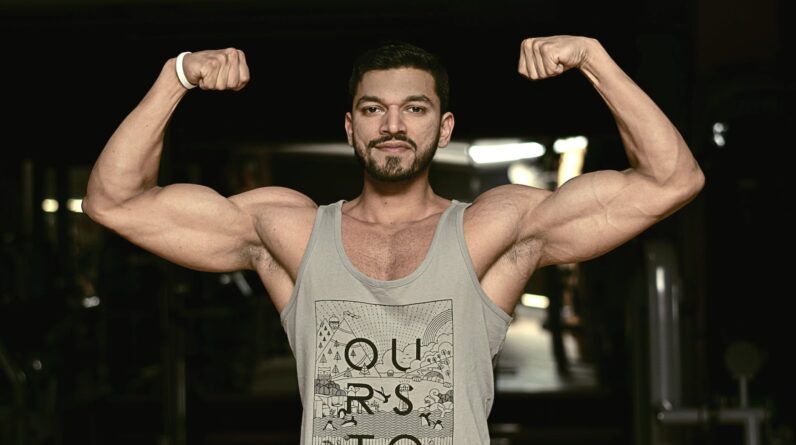
The world of fitness is vast and constantly evolving. With the growth of the internet and social media, there’s an influx of information available at our fingertips. Yet, this information explosion comes with its own set of challenges, primarily, the spread of myths and misconceptions. Bicep and shoulder training, in particular, are areas rife with myths that can inhibit progress, or worse, lead to injury.
In this post, we’ll debunk some of the most widespread misconceptions surrounding these muscle groups.
1. You Need To Lift Heavy To Build Big Biceps And Shoulders
When most people think of a bicep and shoulder workout, they often envision lifting the heaviest weights possible. While lifting heavy can be effective, it’s not the only way to build muscle. What’s crucial is muscle tension and fatigue, which can be achieved even with lighter weights.
By focusing on maintaining proper form, increasing your repetitions, and employing techniques like drop sets or slow negatives, you can stimulate muscle growth effectively without always resorting to heavy weights.
2. Isolating Each Head Of The Deltoid Is Unnecessary
The shoulder comprises three deltoid muscles: anterior (front), medial (middle), and posterior (rear). A common misconception is that a single shoulder exercise, like overhead presses, can target all three adequately.
While overhead presses primarily engage the anterior deltoid, neglecting the medial and posterior deltoids can lead to imbalances and lack of fullness in the shoulder. Incorporating a mix of exercises such as lateral raises, face pulls, and front raises will ensure a more holistic and balanced shoulder development.
3. Bicep Curls Are The Only Way To Train Biceps
Although bicep curls are iconic in the realm of arm workouts, they’re not the be-all-end-all for bicep training. There are various other exercises like hammer curls, preacher curls, and chin-ups which target the biceps from different angles and stimulate both the long and short heads of the muscle. Variety is the key to well-rounded development.
4. Shoulders Should Only Be Trained Once A Week
This myth may have originated from the idea that muscles need time to recover. While recovery is essential, shoulders, being smaller muscle groups, can often recover faster than larger ones like the back or legs.
For many individuals, training shoulders twice a week can be beneficial, especially if they’re lagging behind in development. By adjusting volume and intensity, you can find a balance that allows for optimal growth without overtraining.
5. Training Both On The Same Day Is A Bad Idea
While many traditional workout splits separate these muscle groups, there’s no hard rule against training them together. In fact, pairing biceps and shoulders can be efficient as they don’t directly interfere with each other’s performance.
For example, after an intense shoulder session, your biceps are still relatively fresh and can be trained effectively. Just ensure you’re not overexerting and are giving each muscle group the attention it needs.
6. More Training Leads To Bigger Muscles
While dedication is commendable, overtraining can be counterproductive. Muscles grow during rest, not during workouts. Overworking your biceps and shoulders without allowing adequate recovery can lead to fatigue, injuries, and hindered growth.
Instead, focus on quality workouts and ensure you’re giving your muscles ample time to heal and grow.
7. Only Free Weights Are Effective For Training
While free weights, like dumbbells and barbells, are excellent tools, they’re not the sole players in the game. Resistance bands, cable machines, and even bodyweight exercises can be incredibly effective for building both the biceps and the shoulders.
The key is to employ a variety of tools and methods to keep the muscles challenged and stimulated.
Conclusion
Bicep and shoulder training is as much an art as it is a science. As we continue to learn more about the human body and its response to exercise, it’s essential to stay informed and adaptable. By busting these common myths, you can approach your workouts with a clearer perspective and make more informed decisions that will help you with your workout.







